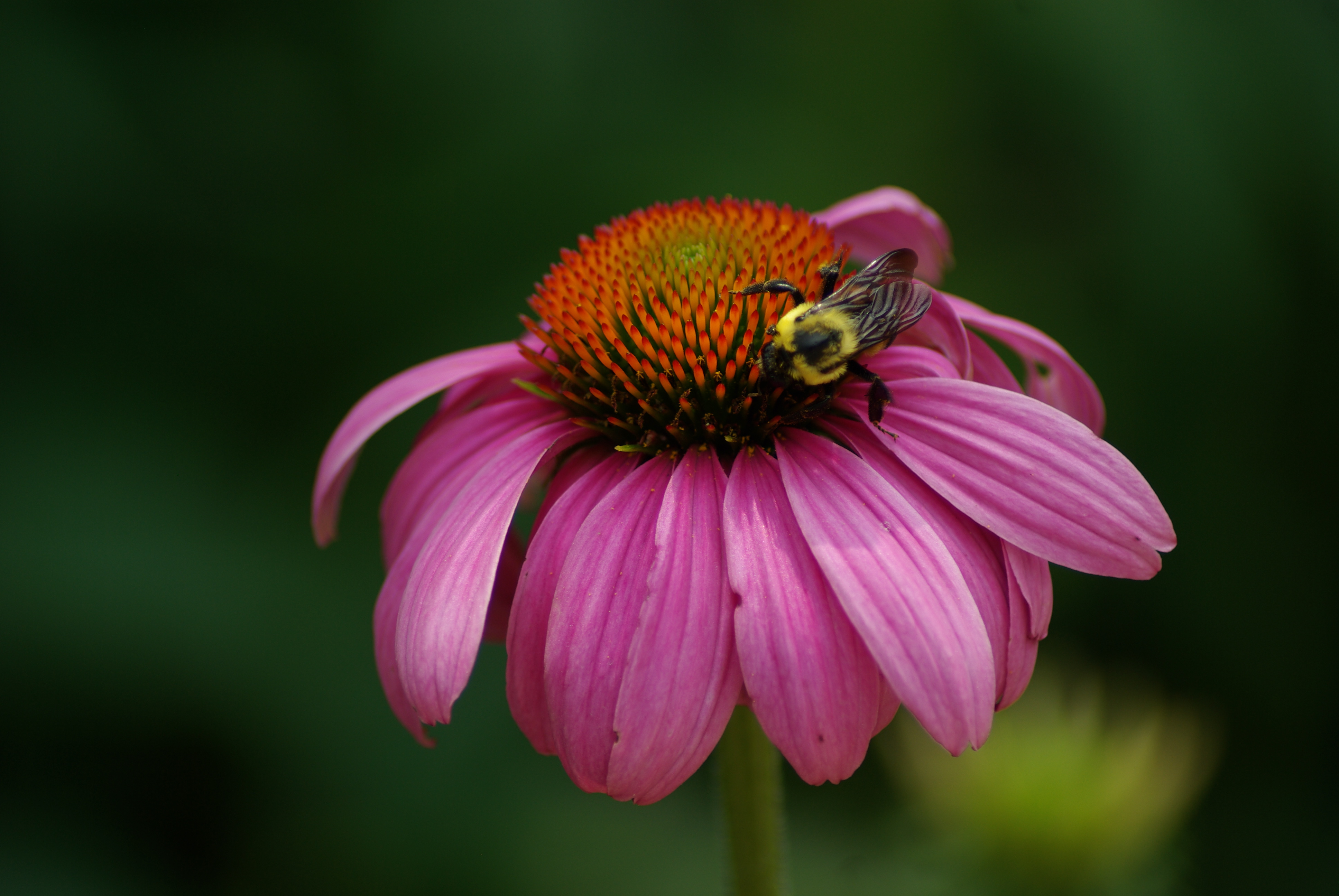The Bee’s Needs: Colony Collapse Disorder and its Causes
By Rachel Stoddard, Biology, 2017
There is no shortage of portrayal of bees in the media. Whether they take the form of an angry swarm chasing off Yogi Bear or a lovable mascot for breakfast cereal, bees have become part of pop culture and are one of the most easily recognizable figures of the insect family. The extent of our dependence on bees, however, is widely underappreciated.
According to the United States Department of Agriculture’s Agriculture Research Service (ARS), roughly a third of our diet is dependent on honeybees. As one of the most prolific pollinators, they represent a $15 billion investment in the agriculture industry each year, and certain crops are completely dependent on the honeybee for survival.
Beginning in fall 2006, beekeepers began to notice significant drops in their hive populations. Some reported as much as a 90 percent decline in the hives. The strangest, however, was that these massive hive casualties did not yield any bodies. Large portions of the worker bee populations were simply gone, leaving behind healthy queens and immature bees.
Now known as Colony Collapse Disorder (CCD), this phenomenon is threatening agriculture as we know it. According to the ARS, since CCD was first observed, bee populations have continued to present annual losses of roughly 30 percent per year. Beekeepers have managed to keep bee populations at critical levels for agriculture so far, but CCD has the potential to hugely impact the agriculture industry and drastically raise food prices if losses continue.

Scientists have been working furiously to find the root of the problem, with no major discoveries of any one “smoking gun.” Scientists know that CCD is triggered by an aggregation of factors with monoculture, pesticides, parasites, and pathogens at the forefront. Understanding how these culprits combine could be the key to saving the bees.
Monoculture is a staple of current agricultural practices. Often, bees are brought in or raised to pollinate a single crop and, therefore, only ever have access to that specific species’ pollen. Almonds are one example. According to the Almond Board of California, every year about 1.6 million colonies of honeybees must be shipped out to California to maintain the almond crop. During this time, bees almost exclusively come into contact with pollen from the almond trees. This can cause nutritional deficits, which have been linked with lowered immunocompetence levels.
Pesticides are also seen as a potential culprit of CCD, partly because of their historically bad rap with environmentalists and conservationists. Several studies have shown that though pesticides can be found in the vast majority of beehives across the country, however, they are not found in concentrations known to be lethal to honey bees.
That is not to say that pesticides are blameless in this mystery; a 2012 study showed that sublethal levels of one pesticide in particular, imidicloprid, made honey bees more susceptible to the unicellular fungal parasite Nesoma. Other instances have been reported as well in which sub-lethal doses of pesticides seem to contribute to weakening immune systems and defense mechanisms of colonies.
Verroa mites also pose a parasitic threat to bee colonies. In fact, parasites or viruses are consistently discovered in hives affected by CCD. Picorna-like viruses, a super-group of viruses consisting of six different families with single-stranded RNA structure, are found in most colonies that have experienced CCD. Of the Picorna-like viruses found in hives, acute bee paralysis virus, Kasmir bee virus, and Isreali acute paralysis virus are mentioned most often, though a myriad of others have also been discovered in colonies.
Scientists are working on developing vaccines and medicines that could be given to the colonies to prevent and treat infections, but these must be invented on a case-by-case basis and will take a lot of time and funding to fully develop.
Despite extensive research, scientists remain unable to pinpoint at a specific cause of CCD. Jeffery Pettis, the research leader in the Bee Research division of the ARS, describes CCD as “a 1,000-piece jigsaw puzzle, and the best I can say is that a lot of pieces have been turned over. The problem is that they have almost all been blue-sky pieces — frame but no center picture.”
As research on this subject continues, a clearer picture of how to save the bees from this mysterious disorder will hopefully form. In the meantime, the ARS urges the public to limit pesticide usage and to plant pollinator-friendly plants whenever possible, ensuring that our cartoon friends’ real-life counter parts remain safe and secure members of our agriculture system.
This article was originally published in NUSci Issue 21.
